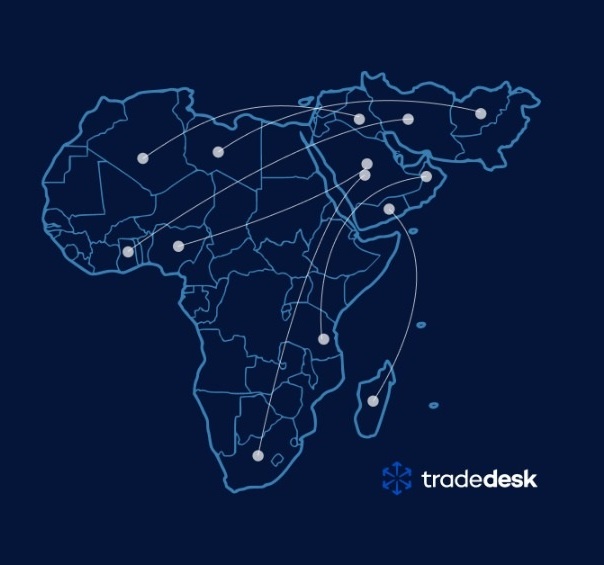Export Readiness Checklist for SMEs
Date Posted: October 26, 2022
_1666790690.jpg)
Small and Medium Enterprises (SMEs) globally play a huge role in many economies, especially in developing countries. Many businesses around the world are SMEs. Hence, they are significant drivers of employment. According to World Bank, SMEs account for more than 50% of all jobs globally and roughly 90% of all enterprises. In developing countries, formal SMEs account for up to 40% of the GDP. However, when informal SMEs are taken into account, these figures are substantially higher.
Many of these SMEs have the potential to export their goods and services. Exporting can boost revenue and profitability, provide economies of scale, lessen your reliance on a single market, and boost your competitiveness. Moreover, it always makes it easy to introduce fresh concepts, methods, and sales strategies that will benefit your domestic brand.
However, some SMEs might see the exporting process as complex and somewhat unattainable. This mindset prevents them from even trying to consider the idea of exportation. If you need to accelerate your business with exporting, you must put conscious efforts into the whole process.
Export-ready firms are actively looking to build global value for new business partners to support their company growth. If your business is just about to start exporting goods to the international market, you will need an export readiness checklist. The Export Readiness Checklist covers factors to consider when determining your export readiness degree. Also, this checklist offers an internal evaluation of your exporting requirements and capabilities.
In this article, we will examine what firms need to know about the SMEs readiness checklist, especially if your business is considering exporting for the first time.
Checklist You Need When Exporting
Are you ready to export your finished goods to other markets abroad? Below are points and checklists that will help you decide if you are ready to introduce your finished goods to customers abroad:
Export Strategy
Being a successful exporter involves developing an export plan for your business. Although the Export Readiness Checklist by itself is not a plan, several of its components should guide your export approach. Critically examine if you have a well-defined export strategy. Even after mapping out a strategy, you also need a well-detailed plan to achieve this strategy. Exporting requires both time and money.
If you want to prepare an excellent export strategy, you must determine how important exports are to your company.
- Does export play a huge role in your long-term company goals?
- Do you have the necessary time, finances, and drive to take on exporting?
- Additionally, you need to determine your firm’s current rate of production. Will you need to increase production or not?
- Do the appropriate stakeholders know about your export strategy?
- Are your export plans’ goals SMART?
Customer base/target market
- Do you know the right market that will pay your product’s worth?
- Do you know how much will be the ideal price to cost your goods?
- What are the prerequisites for venturing into that market?
- What currency will you sell these goods to? Will you have to change some details about your product to meet the requirements in that country?
- Who are your competitors? What has made them remain in the market till now? What can you use to win over customers from your competitors?
To answer all these checklist questions, you must conduct succinct market research. At first glance, the markets that appeal to you can appear like a good match, but before committing to any of them, it’s crucial to do a market study. First, think about all the variables that might affect your exports and company in each market, then carefully evaluate the outcomes. If you need help with this, we can help you build and provide market analyses so you can fully comprehend your target markets and determine how they will benefit your company.
Sales Resources
You need a person in the export manager’s position whose primary duty is to organize the export sales process. For SMEs, this role can be carried out by current salespeople or management staff.
- Does your business have the organizational capabilities and sales procedure needed to join the international market?
- Do you have an individual (or employees) with strong foreign language abilities who could handle the export market?
- Are internal communication mechanisms (taking into consideration linguistic variances and several departments involved) well integrated to guarantee prompt and effective supply of service to export clients?
Logistics
Choosing the best freighting solution is of utmost importance for your company to succeed in exporting. The price you intend to charge and payment options are two elements that should be considered. Incorrect export pricing might lead to losses from unforeseen expenses. You may be able to provide letters of credit or other payment solutions to your international customers, depending on your industry and goods. However, initially, it may be difficult to track down unpaid creditors abroad. In the long run, choosing the best payment method for your company can lower the risk of unpaid creditors.
For this, you should ask yourself questions like
- Do you know the physical infrastructure that will make exporting hard?
- Have you gotten a customs broker?
- Do you know the ideal freight option?
- Have you factored in export cost in the price your customers have to pay?
You need to be mindful of the packaging, labelling, paperwork, and insurance regulations while sending goods abroad. Additionally, familiarize yourself with shipping procedures, international import norms and regulations, and export laws.
You can check out the cost of hiring a freight forwarder. A freight forwarder provides information on freight expenses, port fees, consular fees, costs of specific documents, insurance costs, and the freight forwarder’s handling fees.
A freight forwarder may arrange to have the goods packaged at the port or placed in containers, or they can suggest packaging techniques to safeguard the goods throughout travel.
Production
For you to determine how export-ready you are, you need to analyze your current production units. If you have a higher demand abroad, you will keep disappointing customers. If you produce excess proceeds, these excesses may be wasted.
For this, you need to answer the following checklist questions:
- Is your SME producing enough domestically or internationally?
- Can your current production units enough? Can you increase and decrease response in demand?
- Do your goods meet the standard of the new country’s market?
Export marketing
You cannot just rely on your local marketing strategies to sell in the new market. You need to do some exporting marketing. This would increase your brand's commercial awareness and enable your product to compete strategically This works especially if you do not have partners in that country.
To help with this, you will need the following questions on your checklist:
- Do your goods come in customized packs?
- Will you be able to take business trips to promote your products actively?
- Do you know the right channels of marketing suitable?
- How do you intend to promote your product?
- Can you personally convince people in your target audience to buy?
- Do you have a professional website? Is the website only in English and other languages?
- Do you have a catalogue for your goods?
- Do you know the marketing channels and concepts your competitors in the new market use?
Financing
To finance market growth, you need the means and the financial resources. The amount of capital you will need depends on the size of exporting you intend to do. In addition, you must have a budget for developing the export operations, marketing strategies, and the development of marketing tools to grow the export business.
Moreover, you need to be aware of all the expenses associated with expanding your market and how those expenses will impact your domestic and foreign company operations. You must know your financial demands before going ahead with international or worldwide growth since expenses vary based on your business, target market, and product delivery requirements.
For this, your checklist should have the following
- Do you have an export and marketing budget? Do you have the financial means to sustain international marketing, distribution, and customer service? Is your bank ready to support you?
- How will you continue to have enough domestic funds to finance entering the export market?
- Can you handle all the exporting-related costs?
- Do you know where to find extra funding for the whole exporting idea?
Keep in mind that it will probably take some time to break even and many years to recuperate the expenditures of entering the market.
Conclusion
You can prepare yourself for the market you want to join if you have a firm grasp of these concepts. Moreover, if your answers to all the questions above are positive, then your SME is ready to show the world its goods.


_1687337514.jpg)
_1684612515.jpg)

_1666791043.jpg)
_1666790839.jpg)
_1666790264.jpg)